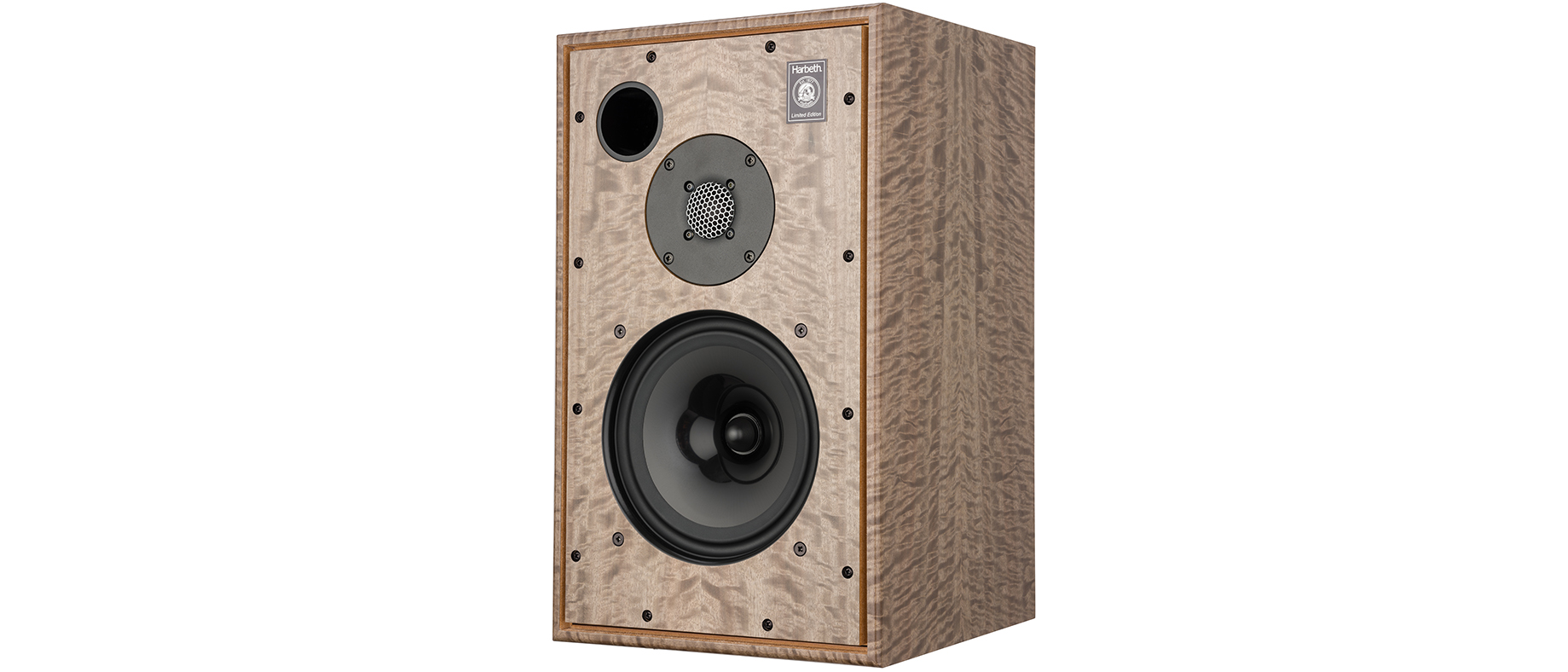What Hi-Fi? Verdict
Do listen to the Harbeth Monitor 30.2s, because you may well decide you prefer the sound of the Harbeth Monitor 30.1s
Pros
- +
Superb midrange
- +
Ambience retrieval
- +
Gorgeous highs
Cons
- -
Stands
- -
Grille removal
- -
Single veneer choice
Why you can trust What Hi-Fi?

This review and test originally appeared in Australian Hi-Fi magazine, one of What Hi-Fi?’s sister titles from Down Under. Click here for more information about Australian Hi-Fi, including details on how to subscribe.
Harbeth does seem to be stringing out its 40th anniversary models a tad (given that the company celebrated that anniversary ‘way back in 2017) but so long as we keep getting models finished in those beautiful silver Eucalyptus Anniversary veneers we won’t be complaining!
As you’ll likely already guessed from the model number, the 30.2 is an upgraded version of Harbeth’s M30.1 model, the review of which you can find at www.tinyurl.com/AHF-Harbeth-30p1-Review. The M30.2 Anniversary model sports WBT ‘Nextgen’ binding posts, Harbeth’s ‘new-look’ tweeter, audio-grade polyester capacitors that are made in England specifically for Harbeth plus, of course, being an ‘Anniversary’ model, it is badged front and rear with ‘40th Anniversary Limited Edition’ badges, plus the grille has a metallic black and gold anniversary badge. The coup de grâce is the silver eucalyptus veneer, which is exclusive to Harbeth’s ‘Anniversary’ models.
Equipment
The Harbeth 30.2 is a two-way bass reflex design with a 25mm soft-dome tweeter, a 200mm bass driver and a single front-firing circular bass reflex port. You can’t really see the dome of the tweeter, because it’s protected by a steel mesh that Harbeth calls a ‘Hexgrille’ presumably by virtue of the fact that the holes in the mesh are hexagonally shaped, rather than the circular, square or diamond shapes that are usually found in the metal grilles used to protect tweeter domes.
Although Harbeth reportedly manufactures one of its tweeters, the one used in the 30.2 is made especially for it by SEAS, and is made to a different specification than the tweeter used in the Monitor 30.1, even though that one is also made by SEAS for Harbeth. One very obvious difference is that the Hexgrille on the 30.2 is a light grey colour, whereas the one on the 30.1 is black. Note that it’s only me who’s calling the colour ‘light grey’—everyone else, presumably taking their cue from Harbeth’s terminology, is calling it ‘silver’. It’s certainly not silver, or even silver-coloured. If you see it in the flesh, I think you’ll agree with me that ‘light grey’ is the closest match on the colour spectrum. (I initially thought that maybe they were calling it silver because 40th anniversaries call for gifts made of silver, but when I checked the all-knowing Wikipedia, it seems that silver is for 25th anniversaries. For fortieth anniversaries, it appears that ruby is the gift to give.)

The bass/midrange driver’s cone is injection-moulded and uses the second generation of a special formulation of polypropylene that Harbeth developed in partnership with the University of Sussex, using grant money from the British Government’s Science & Engineering Research Council. The first generation of this material was dubbed ‘RADIAL’, which was an acronym invented by Harbeth’s owner, Alan Shaw, to stand for ‘Research And Development In Advanced Loudspeakers’, so it seemed only obvious that the second generation of the material would be called RADIAL2.
Harbeth rates the cone in the 30.2 Anniversary as being 200mm in diameter, however the Thiele/Small diameter, which is what’s used by designers to determine the volume of the cabinet and the size and length of the bass reflex port(s) in that cabinet is just 164mm, which results in an effective cone area (Sd) of 212cm². The cone’s roll surround is made from rubber, which is excellent news for Australians, because the extremely high levels of ultraviolet radiation in Australia mean that roll surrounds made from foam usually start to fall apart after about five years, whereas rubber roll surrounds are virtually indestructible.
The 30.2 Anniversary’s bass reflex port is 50mm in diameter and 55mm long, and is positioned quite a long way from the driver whose output it is intended to augment, which is quite unusual. As you can see, it is also positioned at the top of the front baffle rather than at the bottom, which is the more usual placement. When I reviewed the 30.1 I surmised that this location was chosen in order that the cabinet could be smaller (except that despite being advertised by Harbeth as a ‘space-saving reference monitor’ it’s not particularly small!) but I suggested that the same result could have been achieved by using two ports, located slightly above and to either side of the bass/midrange driver… a configuration that Harbeth already uses on its Monitor 40.2.
The bass reflex port on the 30.2 Anniversary does not have same problem that I noted on the 30.1, which is that if you operate the speakers without the grilles fitted (as many passionate audiophiles are wont to do) you will see a piece of white damping foam at the inside end of the port. It seems Harbeth has paid heed to the comments in my earlier review and although the foam is not black, as I recommended, it’s now grey and is dark enough not to be visible through the port if you use the speakers without the grilles.
If you’re now thinking to yourself that you could simply leave the grilles on when the speakers are not being used and take them off when you are using them, you’ll have to think again, because the grilles on the 30.2 Anniversaries are very, VERY difficult to remove. This is because instead of being made from the usual wood or plastic and attached to the front panel using plastic pegs, the frame of the grille on the 30.2 Anniversary is made from flat mild steel, which has to be pressed into a rather deep and very narrow groove that runs around the periphery of the front baffle. This technique means you won’t get any unwanted reflections from the grille frame when you’re using the speakers with the grille in place (and those reflections are one of the reasons audiophiles remove loudspeaker grilles in the first place!).
The latest hi-fi, home cinema and tech news, reviews, buying advice and deals, direct to your inbox.

However this construction technique also makes the grilles very difficult to remove—indeed, a previous reviewer had actually damaged the cabinet of my review sample while he was removing the grille—which means you may do the same if you continually remove and replace the grilles. Unfortunately, as I noted in my review of the 30.1 speakers, this makes it hard to remove the grilles for vacuum cleaning, which has to be done every couple of years if you want the grilles to retain their ‘blackness’. So if you do want to vacuum the grilles I’d suggest doing it while they’re still in place… just do it very carefully!
If you look at the size and weight of the 30.2 Anniversary, one thing should strike you immediately, which is that for a speaker whose cabinet measures 460×277×275mm (HWD) it doesn’t weigh very much—only 11.6kg in point of fact. The reason for this is that all the panels on the speaker except the front baffle are only 12mm thick… less than half the thickness usually found in a loudspeaker of this size. Even the front baffle of the Monitor 30.2 is only made from 18mm-thick stock, whereas the front baffles of most speakers are between 25 and 32mm thick. This very lightweight construction is intentional, because Harbeth prefers to control panel resonances not by increasing the mass of the panels, but by controlling the resonances with tuning devices (damping mats) attached to the inside of those panels. Unlike some Harbeth models, however, there is some cross-bracing inside the Monitor 30.2 to help constrain panel movement.
Unlike most modern loudspeaker cabinets, which are constructed without any visible seams, joints or fixings, the Harbeth 30.2 Anniversary cabinets have more than a few visible joints and fixings, in particular the 12 screws that hold the rear panel to the two side panels and to the top and bottom panels. Unlike the screws that hold the Harbeth 30.1 together, the heads of the screws holding the 30.2 together are ‘tamper-proof’ so you need a special screwdriver to remove them. (Though this apparently didn’t deter the aforementioned reviewer who damaged the cabinet whilst trying to remove the grille from also damaging the tamper-proof screws by trying to remove them with a standard Philips-head screwdriver!) In switching to the tamper-proof design, Harbeth has succeeded in making the screws less visible than they were on the 30.1.
The six panels from which the Monitor 30.2 Anniversary are constructed are high-density fibre-boards that are veneered on both sides. This dual-side veneer technique is much better than using just a single veneer on the outer wall (a technique used by most speaker manufacturers) as it seals the fibre-board better against climatic conditions and ensures dimensional stability. Whereas the Monitor 30.1 is available in a fairly wide range of veneers that are made from real wood, the 30.2 Anniversary is only available in Silver Eucalyptus. The veneers on my review sample were grain-matched and finished with a thin coat of cellulose lacquer that according to Harbeth’s Owner’s Manual can be kept clean by wiping it lightly with a damp cloth.
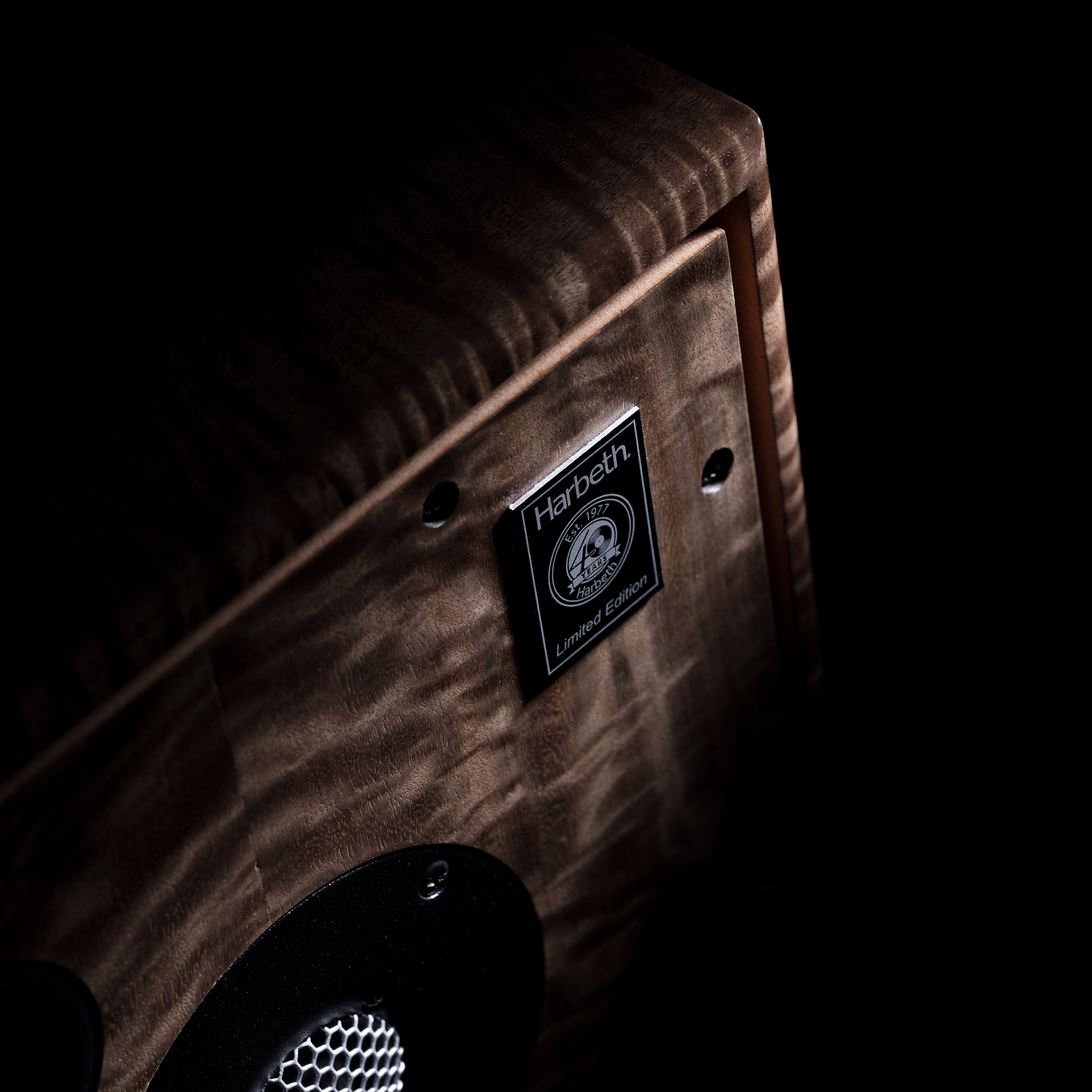
As presaged in the introduction, the rear of the Harbeth 30.2 Anniversary sports original WBT Nextgen binding posts that are made in Germany (the 30.1 has very nice standard gold plated binding posts). Having used both types, my vote is definitely for the WBTs—they’re great!
Inside the Harbeth 30.2 Anniversary you’ll find a large printed circuit board that is home to four ferrite-cored inductors, nine capacitors and six cermet resistors. As stated in the introduction, the 30.2 Anniversary uses very high-quality audio-grade polyester capacitors that are made in England specifically for Harbeth. The internal wiring on the 30.2 is thick, multi-conductor, ultra-low resistance ultra-pure oxygen-free copper.
Listening sessions
The Harbeth 30.2 Anniversary proved to be a very neutral-sounding speaker… or perhaps that should be ‘natural-sounding’, in that it added no character of its own to the recorded sound. This was hardly surprising, of course, because it was designed by engineers working at the British Broadcasting Corporation specifically to monitor the sound quality of the audio transmitted by the BBC’s radio and television stations. Well, the 30.2 Anniversary wasn’t actually designed by the BBC, of course, it was designed by Alan Shaw, the current owner of Harbeth, but he purchased the company from Hugh Harwood who was one of those engineers at the BBC before he left to establish Harbeth in 1967.
However, although the 30.2 Anniversary was designed by Alan Shaw and takes advantage of the new processes and materials that are now available, Shaw himself says that it’s not really a ‘new’ design, just an evolution of an original BBC design (in this specific case, it’s an evolution of a design known as the LS5/9).
For best performance you’ll need to mount the Harbeth 30.2 Anniversary on stands, yet Harbeth itself doesn’t make any for them. As it happens, Harbeth speakers are so popular in the UK that two British manufacturers make stands specifically for the various Harbeth models. Two that are already available for 30.1 (and thus are perfect for the 30.2 Anniversary as well) are made by TonTräger and HiFi Racks, and are available in Australia from importer/distributor Audio Magic for $1,700 and $1,190 per pair, respectively.
lternatively your local hi-fi dealer may have Australian-made stands available to suit the Harbeth 30.2 Anniversary. The only real requirements are that the stands are solid, elevate the speakers at least 50cm above the floor and don’t have a flat metal plate at the top.
As always when I listen to a pair of Harbeth speakers, I was impressed by the way the 30.2 Anniversaries were able to create a real, palpable sense of acoustic space to the music that was reproduced… and they managed to deliver this ‘air’ and ‘ambience’ irrespective of the ‘scale’ of the music being played. It didn’t matter whether it was a solo performer or a full orchestra—or any type of ensemble in between—the sound was seemingly suspended in the room, neither constrained within the cabinets nor ‘larger than life’, but just, somehow, ‘there’.
Listening to Tomorrow, the opening track on Rachel Collis’s album Nightlight, the 30.2 Anniversaries’ delivery was so ambient that if I closed my eyes, I could really imagine she was singing there in the room, and the sound of her piano was superbly realistic. When the percussion chimes in, the percussive nature of the sonic was like a sudden aural shock to the ears after the fluidity of the vocal and piano. It’s this sense of naturalistic space—and of image height and depth—that I think is probably the Harbeth 30.2 Anniversaries’s greatest strength.
I trialled the bass delivery of the Harbeth 30.2 Anniversary first with Machine Gun Fellatio’s Unsent Letter and was surprised to hear rather more punch and depth than I might otherwise have expected from what is essentially a relatively small two-way loudspeaker, but the bass was certainly not overly extended, which I proved to my satisfaction by continuing the listening session first with piano and then with pipe organ. However, in smaller rooms it should be more than sufficient, and if you want more bass, it’s simply a matter of moving the loudspeakers closer to a rear wall… as I discovered, though I preferred the overall sound when the speakers were a couple of metres from that wall, so that’s where I conducted almost all my auditioning.
I was totally blown away by the clarity and precision of the bass delivery, which was particularly evident when playing Schubert’s piano trios, as realised by Trio Alba on SACD (Audiomax 9023013-6). Listen to the openness of the sound of Chengcheng Zhao’s piano, and to the dynamics. I thought that perhaps Philipp Comploi’s cello was a bit more ‘out front’ in the sonic mix, but perhaps all the better just to hear the utter gorgeousness of the sounds he is able to extract from it.
This same SACD also was perfect to reveal the performance of Harbeth 30.2 Anniversary’s tweeter, because Livia Sellin’s violin has been recorded to perfection. Listening to the opening bars of D897 Notturno was a truly magical experience, as the sounds of both the cello and the violin seemed to issue from almost nothingness then solidify in the atmosphere directly in front of me. Importantly, the higher harmonics of the violin sound were almost ethereally pure, with no ‘edge’ at all. I paid particular attention to the presentation of the very highest frequencies, because, as I noted in my review of the 30.1s, I thought the highs on the 30.1 were slightly held back. I am happy to be able to say that the high-frequency sound on the 30.2 Anniversaries is not ‘held back’ in any way at all… it’s perfect. Not only is there no roll-off at all, but also the sound itself is rather more pure and more translucent.
As for the midrange from the Harbeth 30.2 Anniversary, it was perfection itself, and as the late great J. Gordon Holt famously said: ‘If you don’t get the midrange right, nothing else matters.’ One of the discs I use for assessing vocal clarity is a BBC recording of Dylan Thomas’ famous ‘play for voices’, ‘Under Milkwood’—which was very likely monitored with BBC speakers. If a loudspeaker can’t articulate correctly, you’re going to miss half the dialogue of the play, and if it can’t separate different voices speaking simultaneously you’ll miss the whole ‘feel’ of the hubbub of the play. The Harbeth Monitor 30.2s didn’t let me down… I heard not only every single word, but also every single syllable of every single word. Glorious!
The perfection of the Harbeth 30.2 Anniversary’s midrange sound was further revealed when I listened to the amazing soprano sound of Berit Norbakken Solset on ‘The Image of Melancholy’ (BIS 2057), which is not only riveting, but hauntingly beautiful. Once more, having played exactly the same recording on the 30.1 and made copious notes about what I was hearing, I scored the 30.2 fractionally higher.
Verdict
It is my guess that almost every single person reading this review will be doing so in order to make a decision about whether to buy a pair of Harbeth Monitor 30.1s or a pair of Harbeth 30.2 Anniversaries, and it’s a hard decision because they’re both superb-sounding speakers that, not surprisingly given their many similarities, sound very similar. If it were a horse race, and I were the steward, I’d put the 30.2 Annniversaries ahead by a nose! But it’s not a horse race, and so after listening to the two side by side, you may well decide you prefer the sound of the Harbeth Monitor 30.1s.
In the end, it will probably come down to having to make exactly the same decision you have to make every time you book an aeroplane flight, and that is that whether you choose to fly First Class or Business, you’re going to arrive in exactly the same place, at exactly the same time… but it’s ‘way nicer up at the pointy end.
Laboratory test

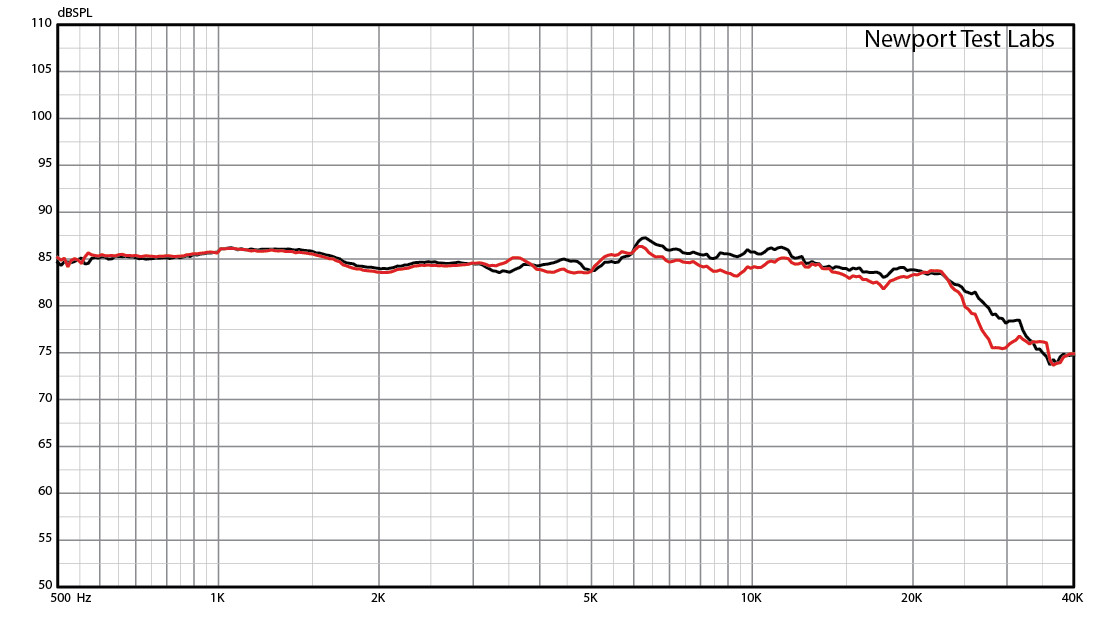
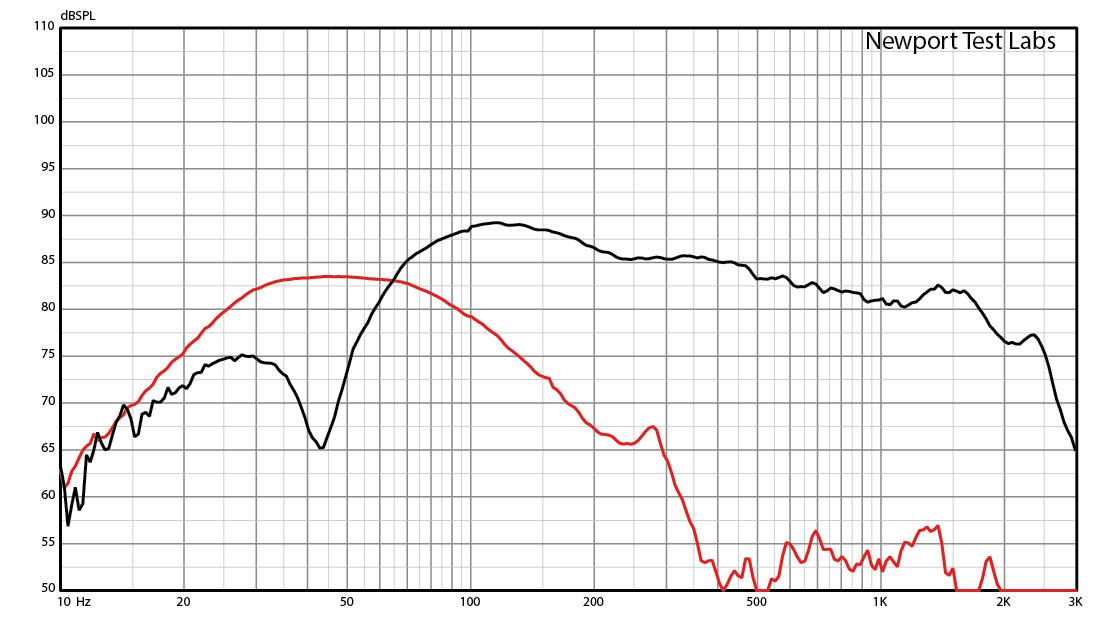
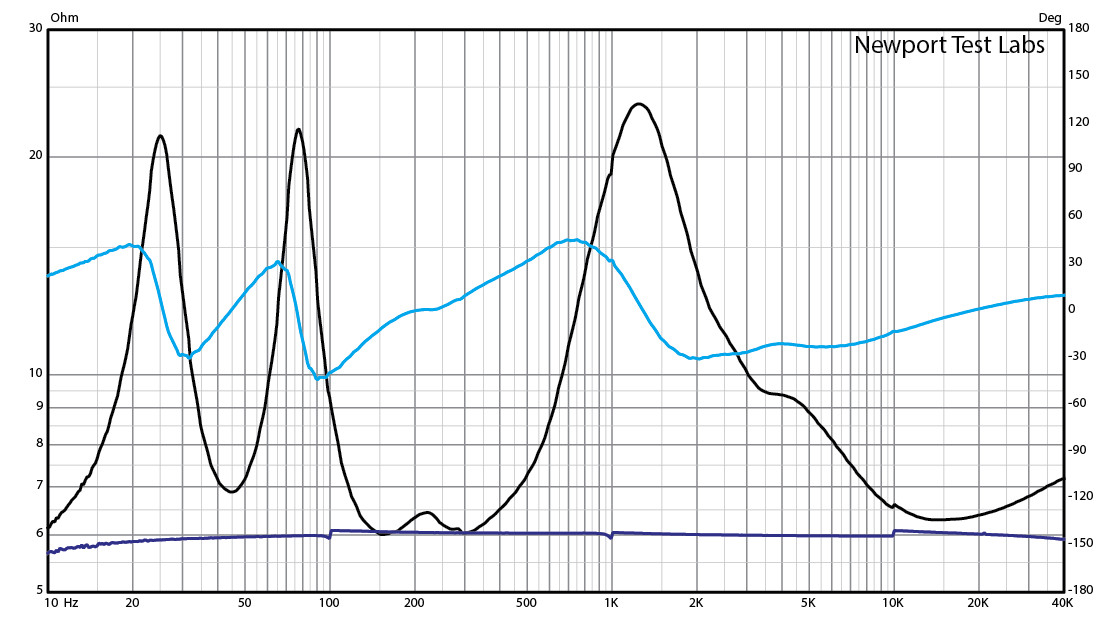
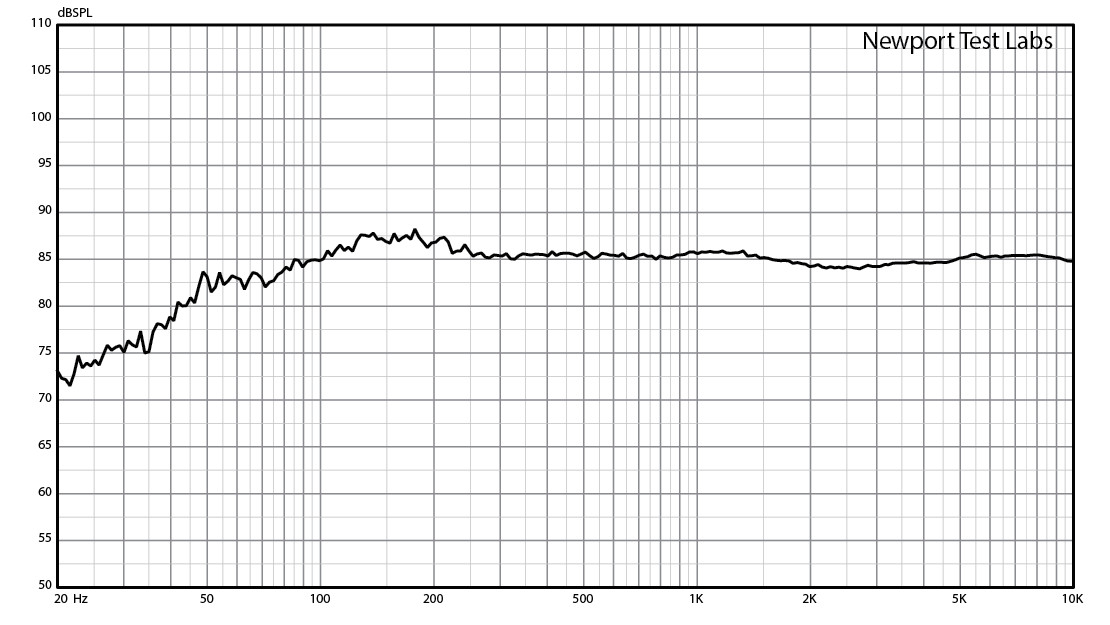

Graph 1 shows the frequency response of the Harbeth 30.2 Anniversary loudspeaker, as measured by Newport Test Labs. It’s excellent, as you can see, with the lab reporting it as 47Hz to 26kHz ±3dB. I couldn’t actually find the specification for the Harbeth 30.2 Anniversary on Harbeth’s website—every time I clicked on the tab that said ‘Specifications’ it took me to those for the 30.1, which show its response as 50Hz–20kHz ±3dB.
Not only is the 30.2 Anniversary’s frequency response extremely flat, there’s also no skew or tilt that would otherwise mean the speaker might emphasise the high or low end of the spectrum, so the response is not only flat, but also balanced. Comparing the same measurement with that Newport Test Labs made on the 30.1, it’s very easy to see where Harbeth has made improvements. First, the response between 250Hz and 5kHz is a little flatter, a little more linear and doesn’t tend to trend downwards in level with increasing frequency. Essentially, the response between 250Hz and 5kHz is ±1dB.
Harbeth has also made considerable improvements to the frequency response at high frequencies. They haven’t been able to eliminate the peak in the tweeter’s response at 6.1kHz, but where the 30.1’s response above this frequency was a bit jagged, and rolled off down to 15kHz before picking up, the 30.2’s high-frequency response is much, much smoother and barely rolls off at all… in fact it doesn’t really begin rolling off until above 20kHz. (The frequency response shown in Graph 1 is actually the result of two separate measurements, details of which are included in the graph caption.)
In Graph 2, Newport Test Labs has measured the high-frequency response of the Harbeth 30.2 Anniversary with the grille in place (black trace) and without it (red trace). Once again you can see how smooth and extended the tweeter’s high-frequency response is, even with the increased resolution afforded by the graphing—this is very good performance. You can also see that the grille is almost totally acoustically transparent, and there are no frame reflections at all (because the frame is recessed into the baffle). There is a very slight transmission loss, as the cloth absorbs some of the sound, which it does between 3.2kHz and 20kHz, but the loss (between 1 and 2dB) is basically uniform with frequency, so the essential ‘character’ of the sound would not be affected. The grille does increase attenuation above 20kHz, so that whereas the high-frequency response without the grille is 3dB down at 26kHz, it’s 3dB down at 24kHz when the grille is fitted. Although it’s evident on the graph to the eye, this difference would not be perceptible to the ear… even a trained ear.
The near-field low-frequency response of the Harbeth 30.2 Anniversary is shown in Graph 3, as measured by Newport Test Labs (but with somewhat different scaling from the same measurement the lab made on the 30.1). Essentially the graphs are almost identical, with the minima of the bass/midrange driver at 44Hz and the port’s output having a very low Q. The ‘kick’ in the port’s response at 280Hz is rather more obvious with this scaling, but it was also present in the output of the 30.1. It would seem to be caused by a cabinet resonance; its effect is also visible on the impedance trace.
The impedance of the Harbeth 30.2 Anniversary shown in Graph 4 only drops below 6Ω at 160Hz (to 5.8Ω), and is also mostly above 8Ω, so it’s higher than I usually see on most modern speaker designs with 8Ω nominal impedance ratings, but it means that the 30.2 Anniversary is a true ‘eight-ohm’ design. The kink in the impedance trace is that panel resonance I noted earlier. The saddle between the two resonant peaks is at 45Hz, showing that you will get little effective output from the bass/midrange driver below this frequency. The rather high impedance of the system around 1.3kHz means some amplifiers might reduce their output in this region as a result, so amplifier matching will assume greater importance with this design than it might with some other speakers. The way the impedance rises above 15kHz ensures the speaker will be very ‘amplifier-friendly’ however.
The in-room response of the Harbeth 30.2 Anniversary is shown in Graph 5 with Newport Test Labs using a pink noise test stimulus, averaging nine different sweeps measured at three metres, with the upper frequency of the measurement limited at 10kHz. As you’d expect, the response is superbly flat and there’s absolutely no ‘skew’ to the trace—it almost tracks the 85dBSPL graph horizontal.
Newport Test Labs measured the sensitivity of the Harbeth 30.2 Anniversary as being 86.5dBSPL at one metre for a 2.83Veq input, which is a touch lower than the average for all speakers, so I’d suggest that you use an amplifier with an output power rating of at least 60 or 70-watts per channel to drive them… unless you have a small room and listen at lower levels, in which case 40–50-watts would likely be sufficient.
Looking back at the conclusion I drew about the Harbeth Monitor 30.1 after examining its test results, I wrote that it ‘was a very well-designed loudspeaker, with a higher efficiency than I would have expected for its size and driver configuration.' I am going to say exactly the same thing about this Harbeth 30.2 Anniversary model, but add the note that its measured frequency responses are superior to those which Newport Test Labs measured for the Harbeth Monitor 30.1, and the efficiency is identical.
Australian Hi-Fi is one of What Hi-Fi?’s sister titles from Down Under and Australia’s longest-running and most successful hi-fi magazines, having been in continuous publication since 1969. Now edited by What Hi-Fi?'s Becky Roberts, every issue is packed with authoritative reviews of hi-fi equipment ranging from portables to state-of-the-art audiophile systems (and everything in between), information on new product launches, and ‘how-to’ articles to help you get the best quality sound for your home.
Click here for more information about Australian Hi-Fi, including links to buy individual digital editions and details on how best to subscribe.
